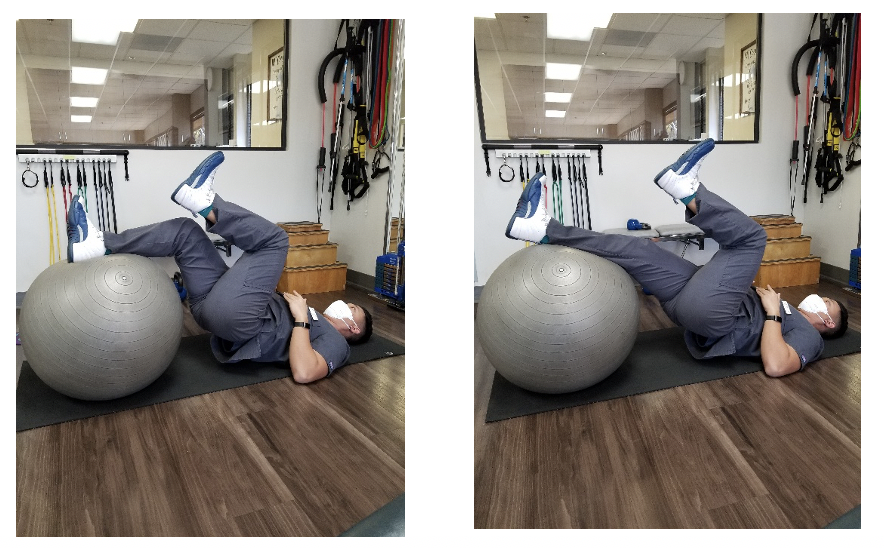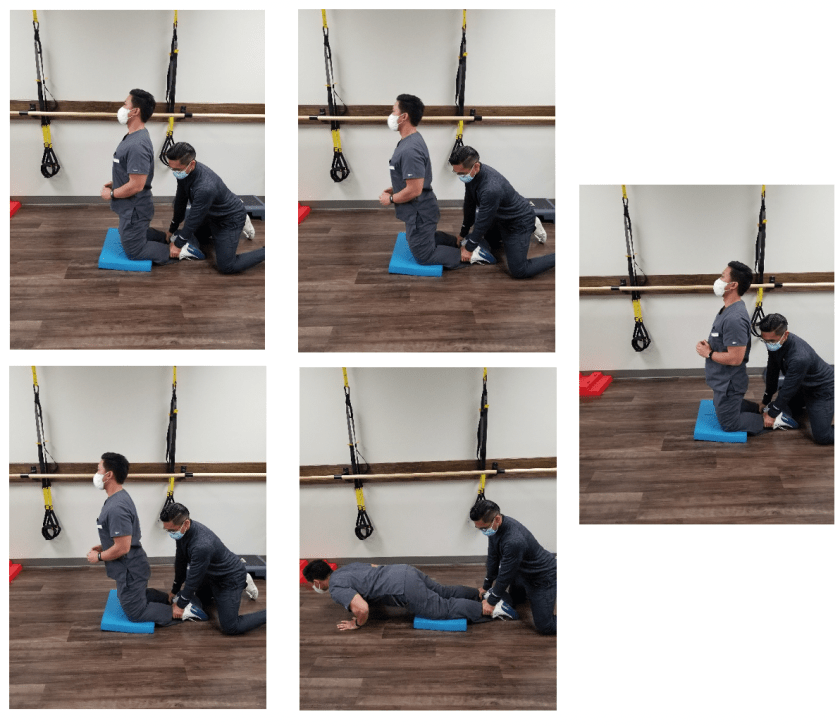What is Eccentric Exercise?
Repetitive motions consist of a concentric and eccentric portion of the exercise. The concentric portion refers to muscle activation while the active muscles are shortening—an example is the portion of the curl when the elbow is bending (the bicep is active and shortening). The eccentric portion of an exercise refers to muscle activation while the active muscles are lengthening—with the bicep curl example, the portion of the exercise in which the elbow is straightening (bicep is active and lengthening).

Eccentric Exercise in Hamstring Injuries
During the pandemic, many athletes have turned to running as their primary form of exercise. While running is excellent exercise, it’s important that our body be strong enough to accept our new activities to avoid injury. Hamstring strength is important for running and, in particular, for sports with sprinting, acceleration, and change of direction. Decreased hamstring strength can lead to injury, and a hamstring strain can be a nagging injury and predispose athletes to future hamstring strains— having a previous hamstring strain increases the risk of a future hamstring strain between two and six times.1,2 Reinjury typically takes significantly longer to recover from than a first-time injury.1 Research has shown that including eccentric training of the hamstring is beneficial for both rehabilitation of hamstring strains and prevention of future hamstring injury. Below is a progression of some eccentric hamstring exercises, from easy to advanced.
- Bridge fall-out with slider (2-3 sets of 8-12 reps)

2. Swiss Ball Eccentric hamstring (2-3 sets of 8-12 reps)

3. Eccentric SL RDL (2-3 sets of 8-12 reps)

4. Nordic Hamstring (2-3 sets of 6-8 reps)

Have a nagging hamstring injury? We can help! Give us a call at 619.260.0750.
References:
- Schmitt B, Tim T, McHugh M. Hamstring injury rehabilitation and prevention for reinjury using lengthened state eccentric training: a new concept. Int J Sports Phys Ther. 2012; 7 (3): 333-341.
- Lorenz D, Reiman M. The role and implementation of eccentric training in athletic rehabilitation: tendinopathy, hamstring strains, and ACL reconstruction. Int J Sports Phys Ther. 2011; 6 (1): 27-44.
Innovative Physical Therapy, “Solutions in Motion”
info@innovativept.net
